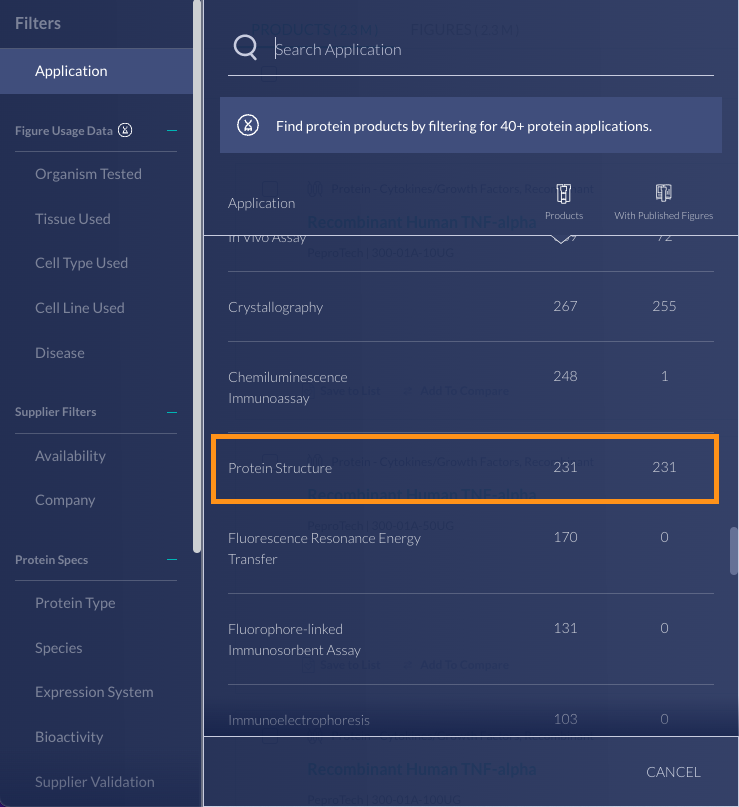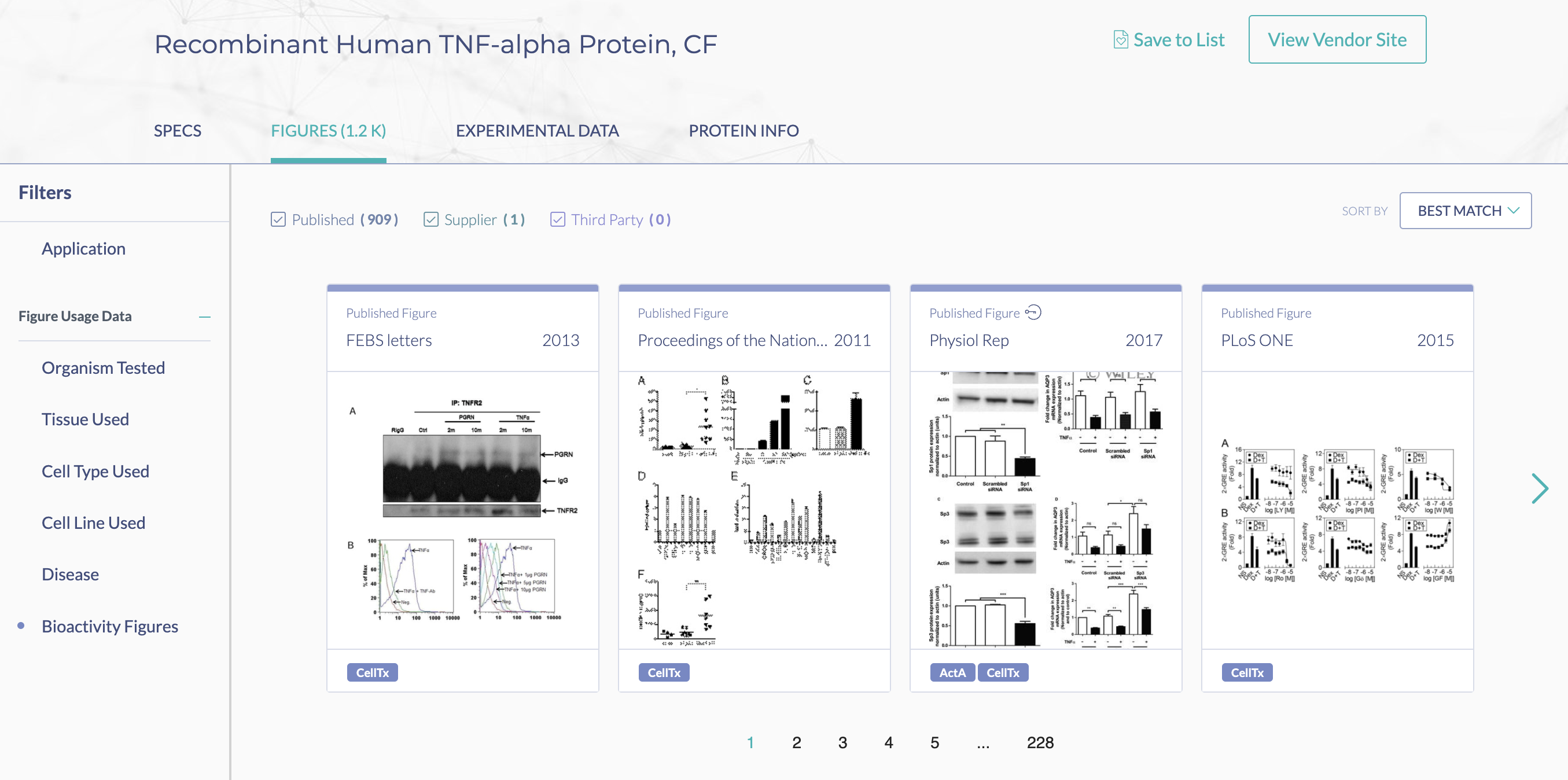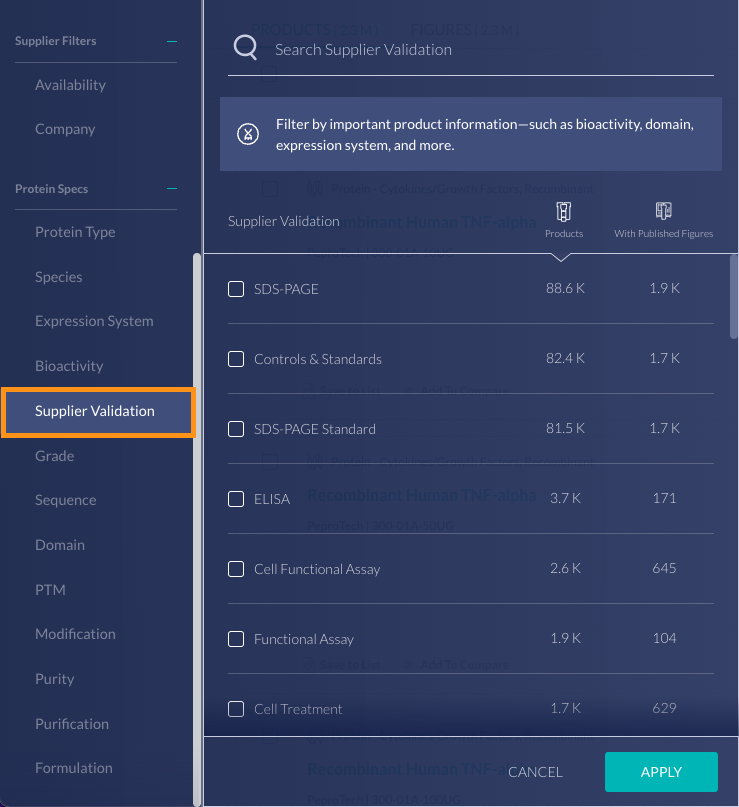In 2020, when BenchSci started expanding its technology beyond antibody selection to include unique insights on other reagent and model system types, one of our first priorities was the addition of protein data. We’ve added lots more since then, and now we’ve circled back to make our protein data offering even more comprehensive.
Since this past March, we’ve added over 20 million new protein experiments to our database—a 550% increase!
To further increase our platform’s impact on protein-related research, we’ve also:
- Incorporated amino acid coordinates
- Introduced protein structural data
- Launched bioactivity and supplier validation filters to help scientists narrow in on that specific information
Login now to check out these new features today or read on to learn more.
Quickly and confidently identify amino acid coordinates
We’ve standardized our reporting of vendor-provided amino acid ranges, so scientists can quickly determine if a product is a full-length protein or just a fragment. When a vendor provides the amino acid sequence for a protein product, we determine the amino acid range using in-house bioinformatics sequencing. Amino acid coordinates are displayed with the starting and ending amino acid abbreviations and the numerical values indicating the amino acid positions. Coordinates are only included if there is a 100% match to the sequence, allowing for the highest degree of confidence in this data.
Amino acid coordinates are listed on applicable proteins
Leverage protein structural data
This update also includes the addition of protein structural data from roughly 200,000 experiments, representing a 138% increase in crystallography and electron microscopy data on our database and introducing data derived from the new protein structure technique. Structural data will help scientists easily identify potential protein interaction sites and select drugs based on the physical properties of their protein of interest.

Find the new Protein Structure filter under Application
Filter for bioactivity and supplier validation data
Our updated Bioactivity filter tells scientists when vendors have indicated a protein product is bioactive or there is bioactive evidence from the literature confirming that a product will behave as expected. Using this filter, scientists can surface over 94,000 figures supporting bioactivity claims. Bioactivity labels are applied to products based on data provided by the vendors themselves or derived from peer-reviewed experiments that are recognized as proof of protein bioactivity, including activation assay, cell functional assay, cell treatment, fluorometry, functional assay, and inhibition assay experiments. Bioactivity data will appear in three places on the platform; the product tile section, the product page specs section, and the compare table.

Figures supporting bioactivity in Recombinant Human TNF-alpha Protein, CF
Additionally, our new Supplier Validation filter indicates when a vendor has conducted testing on a product and provided BenchSci with figure data from those tests, so scientists can have even more confidence that the products they choose will be reliable. This filter will identify products with vendor figures from validation experiments such as SDS-PAGE, high-performance liquid chromatography (HPLC), or western blot. Supplier validation data are also accessible through product pages.

Use the Supplier Validation filter to surface vendor-supplied figure data
We’d love to hear how you’re leveraging this additional protein data on BenchSci to increase the speed and efficacy of your research. Let us know in the comments below, and please feel free to share your thoughts on how else we can make your BenchSci experience even better.
Login to BenchSci now to start using these new features today. Subscribe to our blog for all the latest BenchSci news and updates.
